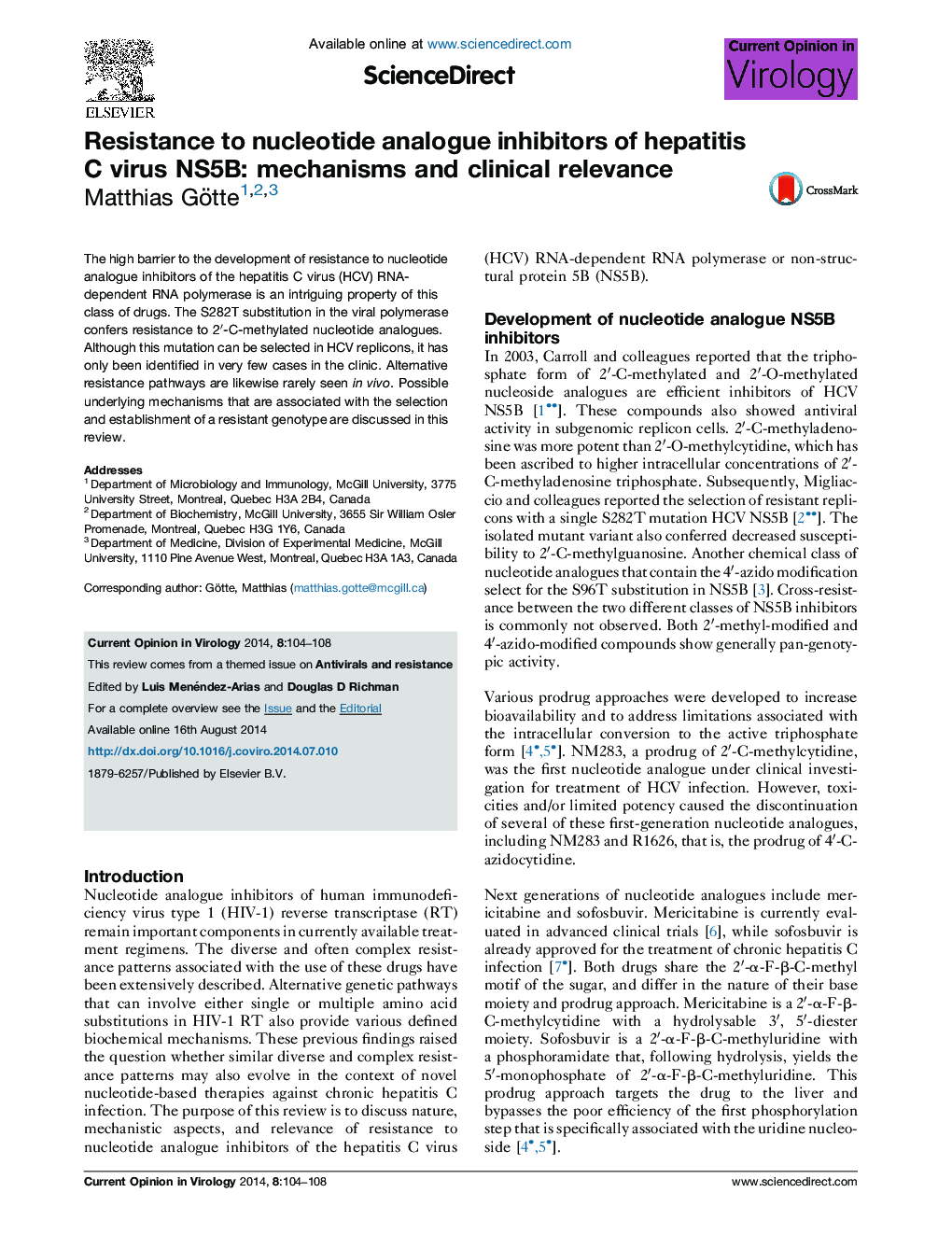| Article ID | Journal | Published Year | Pages | File Type |
|---|---|---|---|---|
| 5806770 | Current Opinion in Virology | 2014 | 5 Pages |
â¢Nucleotide analogue NS5B inhibitors are associated with high resistance barriers.â¢The S282T mutation in NS5B is rarely selected in vivo.â¢L159F confers low-level resistance to clinically relevant nucleotide analogues.â¢Mechanisms of resistance can involve modified interaction with bound RNA.
The high barrier to the development of resistance to nucleotide analogue inhibitors of the hepatitis C virus (HCV) RNA-dependent RNA polymerase is an intriguing property of this class of drugs. The S282T substitution in the viral polymerase confers resistance to 2â²-C-methylated nucleotide analogues. Although this mutation can be selected in HCV replicons, it has only been identified in very few cases in the clinic. Alternative resistance pathways are likewise rarely seen in vivo. Possible underlying mechanisms that are associated with the selection and establishment of a resistant genotype are discussed in this review.
